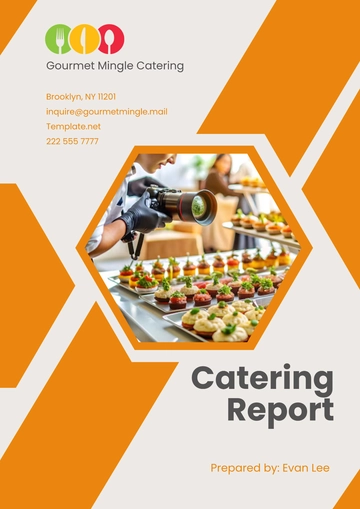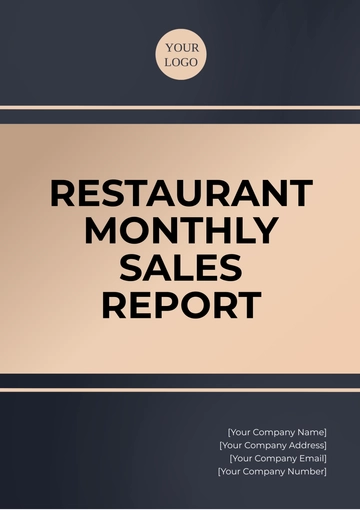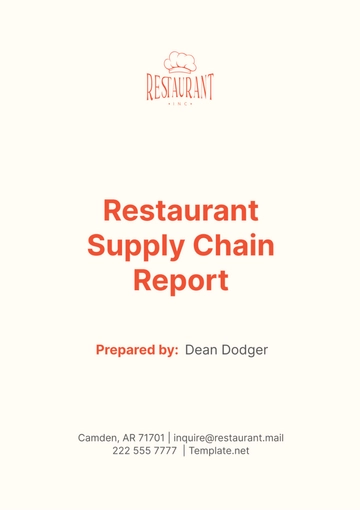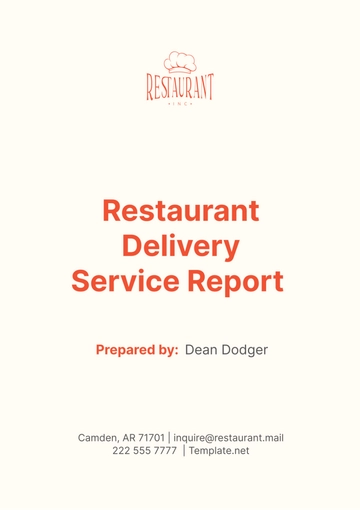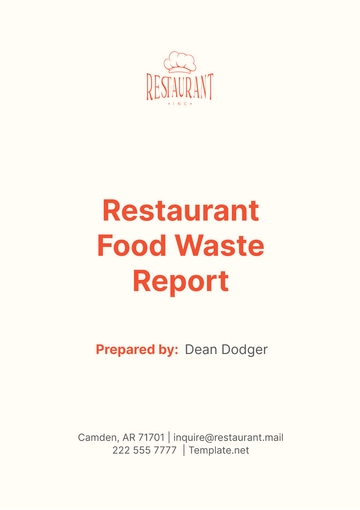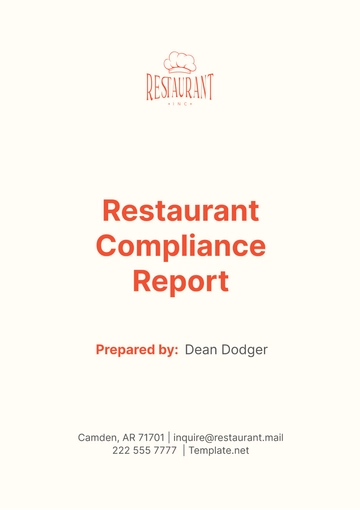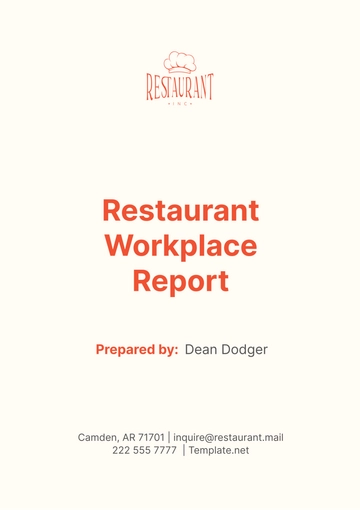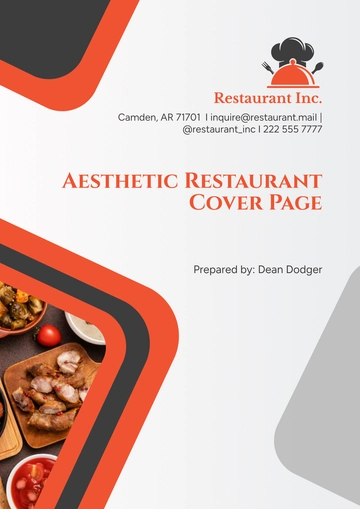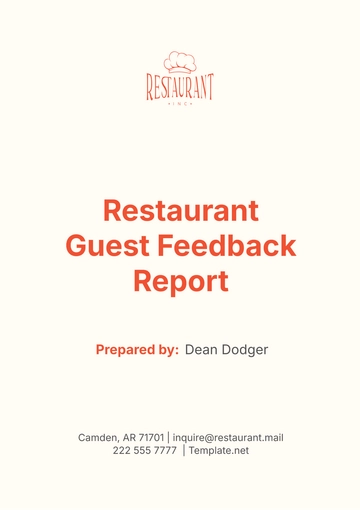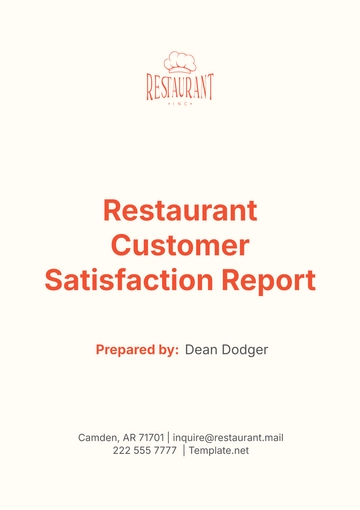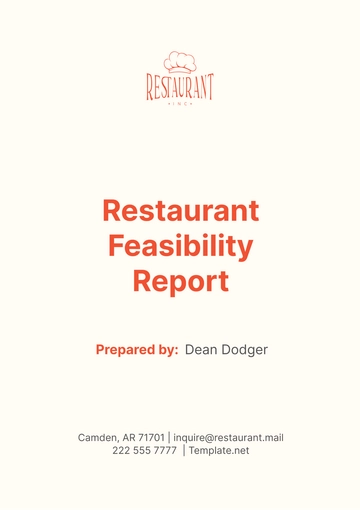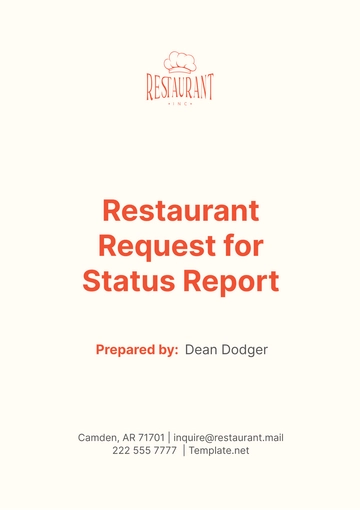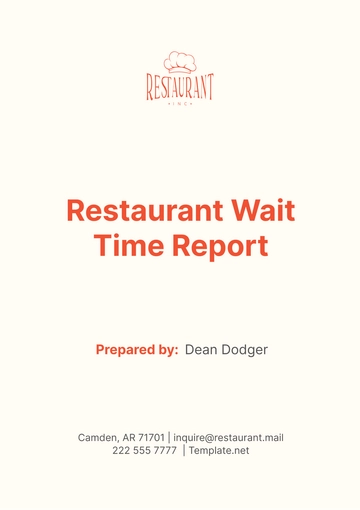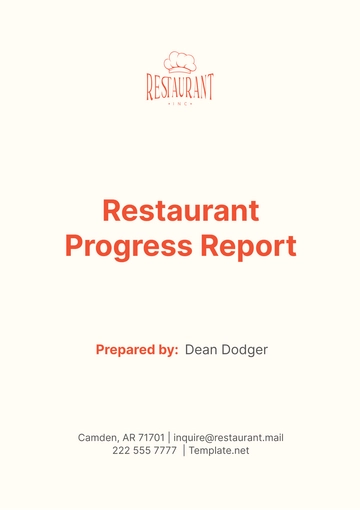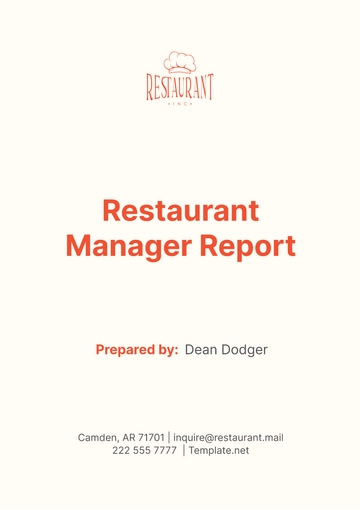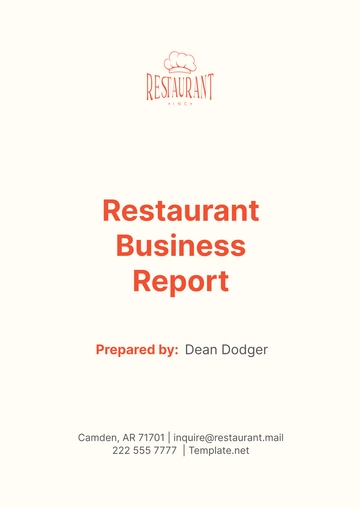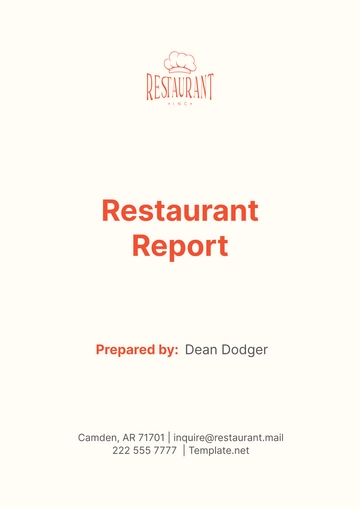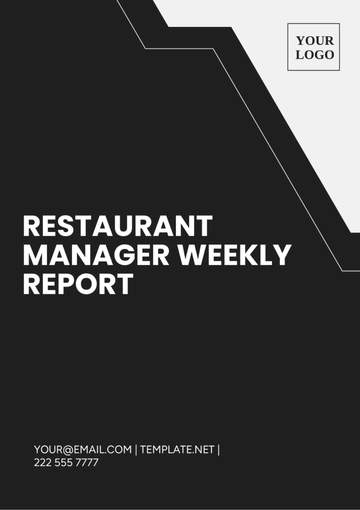Free Restaurant Feasibility Report
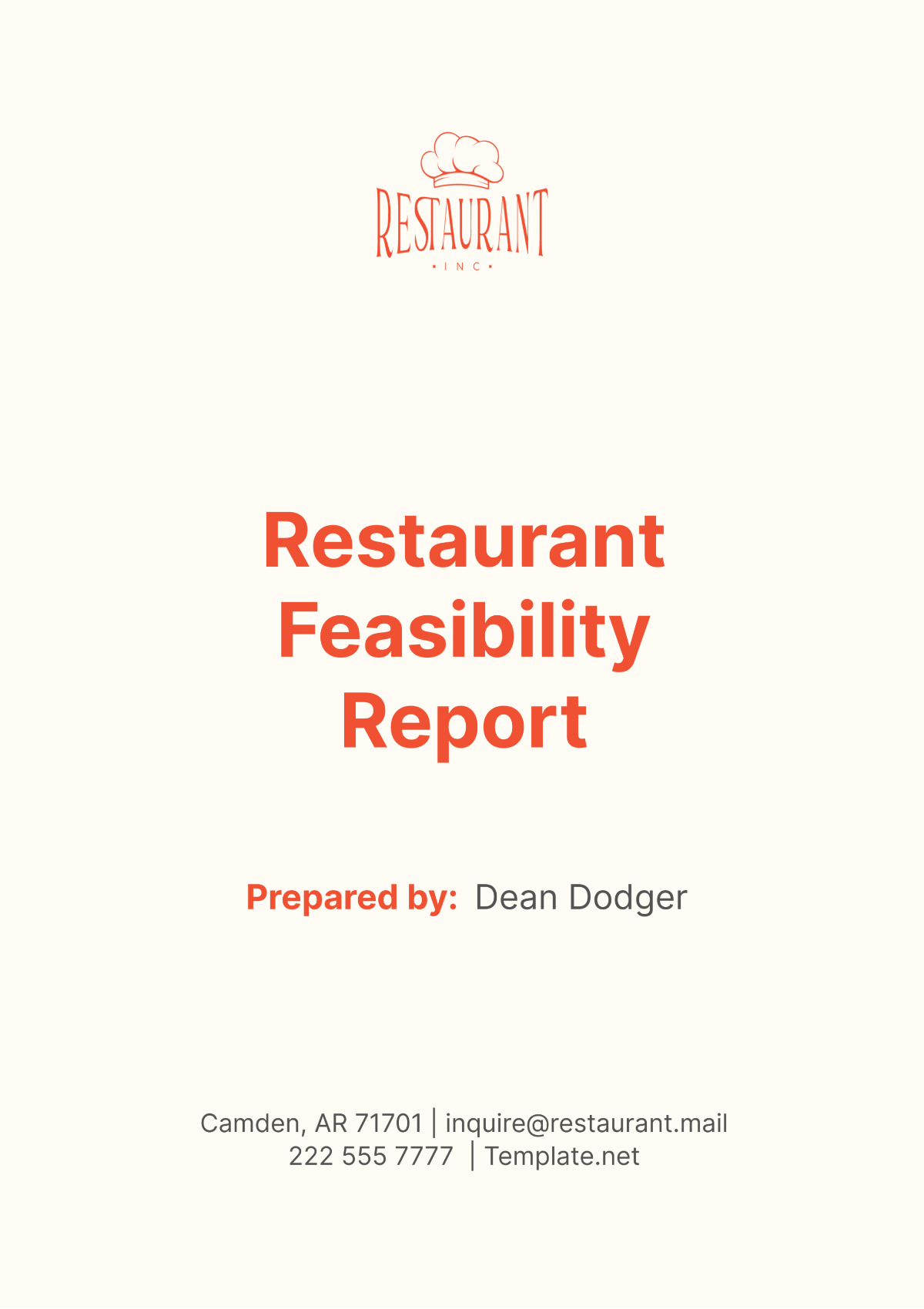
I. Executive Summary
A. Introduction
Purpose of the Report
[Your Company Name] has conducted a comprehensive feasibility study to evaluate the viability of establishing a new restaurant venture in [Location]. The primary objective of this report is to provide a detailed analysis of market conditions, competitive landscape, technical requirements, financial projections, and associated risks to guide decision-making regarding the proposed restaurant project.
Key Findings
2.1 Market Analysis: The research indicates a robust demand for dining establishments in [Location], driven by demographic trends, lifestyle changes, and increasing consumer spending on dining out.
2.2 Competitive Landscape: The competitive analysis reveals opportunities for differentiation through innovative concepts, quality offerings, and personalized customer experiences.
2.3 Financial Projections: Based on the projected revenue streams and operating expenses, the financial forecast suggests favorable returns on investment within the first three years of operations.
Recommendations
[Your Company Name] recommends moving forward with the establishment of the restaurant project, leveraging the identified market opportunities and implementing strategies to mitigate potential risks.
II. Introduction
A. Background
Overview of the Project
The proposed project entails the development and operation of a [Cuisine Type] restaurant in [Location]. The restaurant will aim to offer a unique dining experience, blending [Cuisine Type] cuisine with innovative culinary techniques and exceptional customer service.
[Your Company Name] intends to target both local residents and tourists visiting [Location], capitalizing on the growing interest in gastronomic tourism and the diverse culinary scene in the area.
The decision to embark on this restaurant venture aligns with [Your Company Name]'s strategic objectives of diversifying its portfolio and expanding its presence in the hospitality industry.
Objectives
The primary objectives of this feasibility study are:
2.1 To assess the market potential and demand for a [Cuisine Type] restaurant in [Location].
2.2 To analyze the competitive landscape and identify opportunities for differentiation.
2.3 To evaluate the technical requirements, including site selection, facility layout, and equipment needs.
2.4 To project the financial performance of the restaurant venture, including startup costs, operating expenses, and revenue projections.
2.5 To identify and mitigate potential risks associated with the establishment and operation of the restaurant.
By addressing these objectives, [Your Company Name] aims to make informed decisions regarding the feasibility and viability of the proposed restaurant project.
III. Market Analysis
A. Industry Overview
Current Trends and Developments
The restaurant industry in [Location] is experiencing notable trends and developments that influence consumer behavior and market dynamics. Some key trends include:
Growing demand for experiential dining: Consumers are increasingly seeking unique dining experiences, such as themed restaurants, interactive dining concepts, and chef-driven menus.
Emphasis on health and sustainability: There is a rising awareness among consumers about healthy eating options and sustainable food practices. Restaurants offering organic, locally-sourced ingredients and plant-based menu items are gaining popularity.
Technology integration: The adoption of technology in restaurants, such as online ordering systems, mobile payment options, and digital menus, is becoming commonplace, enhancing convenience and efficiency for customers.
Rise of delivery and takeout services: With changing consumer preferences and lifestyle patterns, there is a growing demand for food delivery and takeout services, driven by factors such as convenience, time-saving, and safety concerns.
Market Size and Growth Potential
The restaurant industry in [Location] is a significant contributor to the local economy, with a substantial market size estimated at [30%] annually. Market research indicates steady growth in the sector, with a projected annual growth rate of [22]% over the next five years.
Target Market
3.1 Demographic Profile
Age: The target demographic for the proposed restaurant includes adults aged 25-55, representing a diverse mix of professionals, families, and tourists.
Income Level: The target market comprises individuals with moderate to high disposable incomes, capable of spending on premium dining experiences.
Preferences: Consumer preferences vary, with a significant portion of the target market expressing interest in exploring new cuisines, flavors, and dining concepts.
3.2 Consumer Behavior
Dining Habits: The target market exhibits a propensity for dining out regularly, with a preference for both casual and fine dining experiences.
Frequency of Eating Out: Consumer surveys indicate that a significant portion of the target market dines out at least two times per week, with weekends being the peak dining period.
Preferred Cuisines: While there is a demand for diverse cuisines, [Cuisine Type] cuisine is particularly popular among the target demographic, indicating a favorable market opportunity for the proposed restaurant.
B. Competitive Analysis
Identification of Key Competitors
The restaurant landscape in [Location] is characterized by a diverse mix of dining establishments, including casual eateries, upscale restaurants, and specialty cafes. Some key competitors in the market include:
[Competitor 1]: A well-established [Cuisine Type] restaurant known for its authentic flavors and upscale ambiance.
[Competitor 2]: A popular chain of casual dining restaurants offering a diverse menu of international cuisines.
[Competitor 3]: A trendy gastropub known for its craft cocktails, artisanal beers, and eclectic menu offerings.
SWOT Analysis
2.1 Strengths:
Strong brand reputation and customer loyalty.
Prime location with high foot traffic.
Extensive menu offerings catering to diverse preferences.
2.2 Weaknesses:
Limited marketing efforts and brand visibility.
Challenges in sourcing high-quality ingredients locally.
Seasonal fluctuations in tourist traffic impacting revenue.
2.3 Opportunities:
Expansion of delivery and takeout services to capture additional market share.
Collaboration with local suppliers and artisans to promote sustainability and community engagement.
Introduction of seasonal menus and special promotions to attract repeat customers.
2.4 Threats:
Intense competition from established players and emerging dining trends.
Economic downturns impacting consumer spending on dining out.
Regulatory changes affecting operating costs and compliance requirements.
Unique Selling Proposition (USP)
The proposed restaurant will differentiate itself in the market by:
Offering a fusion of [Cuisine Type] cuisine with innovative twists and creative presentations.
Emphasizing locally-sourced, sustainable ingredients to promote environmental responsibility and support local producers.
Providing a memorable dining experience through personalized service, interactive elements, and immersive ambiance.
IV. Technical Analysis
A. Location Assessment
Site Selection Criteria
The selection of an ideal location for the restaurant is crucial for its success. Key criteria for site selection include:
Accessibility: Proximity to major transportation hubs, parking facilities, and pedestrian traffic.
Visibility: Visibility from main roads, signage opportunities, and presence in high-traffic areas.
Demographics: Alignment with the target market profile, including residential density, income levels, and lifestyle preferences.
Competition: Analysis of nearby competitors and market saturation to identify underserved areas or niche opportunities.
Evaluation of Potential Locations
[Your Company Name] has conducted a thorough evaluation of several potential locations in [Location], considering the aforementioned criteria. The following table provides a comparative analysis of the top three candidate sites:
Location | Accessibility | Visibility | Demographics | Competition | Overall Score |
|---|---|---|---|---|---|
Downtown Area | High | Excellent | Favorable | Moderate | [Score] |
Shopping Mall | Moderate | Good | Target Market | High | [Score] |
Waterfront | Excellent | Excellent | Tourists | Low | [Score] |
Note: The overall score is based on a weighted average of individual criteria, with higher scores indicating greater suitability for the restaurant project.
B. Facilities and Infrastructure
Layout and Design
The restaurant will feature a modern yet inviting ambiance, with an open kitchen concept, cozy seating areas, and tasteful decor reflecting the [Cuisine Type] theme. The layout will optimize space utilization while maintaining a comfortable dining environment for patrons.
Equipment and Furnishings
A comprehensive inventory of equipment and furnishings required for the restaurant includes:
Kitchen Equipment: Commercial-grade cooking appliances, refrigeration units, food preparation stations, etc.
Dining Furniture: Tables, chairs, booths, and bar stools designed for durability, comfort, and aesthetic appeal.
Decor and Accessories: Lighting fixtures, artwork, tableware, and decorative elements to enhance the ambiance and reinforce the restaurant's theme.
[Your Company Name] will source high-quality equipment and furnishings from reputable suppliers, ensuring reliability, functionality, and compliance with industry standards.
V. Financial Analysis
A. Startup Costs
Initial Investment
The startup costs for the restaurant project encompass various expenses, including:
Leasehold Improvements: Renovations, interior design, and customization of the leased space.
Equipment Purchases: Kitchen appliances, dining furniture, POS systems, and other operational essentials.
Licenses and Permits: Health permits, liquor licenses, business registrations, and regulatory fees.
Initial Inventory: Food and beverage supplies, ingredients, and consumables to launch operations.
Marketing and Branding: Website development, signage, promotional materials, and advertising campaigns.
Contingency Fund: Reserves for unexpected expenses, contingencies, and working capital.
Funding Sources
[Your Company Name] intends to finance the startup costs through a combination of equity investment, bank loans, and potential grants or incentives. The following table outlines the projected sources of funding:
Funding Source | Amount ($) | Percentage (%) |
|---|---|---|
Equity Investment | $200,000 | 40% |
Bank Loan | $250,000 | 50% |
Grants/Incentives | $50,000 | 10% |
Total | $500,000 | 100% |
B. Operating Expenses
Fixed Costs
The ongoing fixed expenses for the restaurant include:
Rent: Monthly lease payments for the commercial space.
Utilities: Electricity, water, gas, internet, and telephone services.
Insurance: Property insurance, liability coverage, and workers' compensation.
Salaries and Benefits: Wages for kitchen staff, servers, management, and payroll taxes.
Maintenance: Routine upkeep, repairs, and maintenance of equipment and facilities.
Administrative Expenses: Accounting services, legal fees, software subscriptions, and office supplies.
Variable Costs
The variable expenses associated with daily operations include:
Cost of Goods Sold (COGS): Food and beverage purchases, raw materials, and inventory replenishment.
Marketing and Promotion: Advertising campaigns, social media marketing, and promotional events.
Operating Supplies: Disposable items, cleaning supplies, uniforms, and guest amenities.
Delivery and Transportation: Fees associated with food delivery services, transportation of goods, and catering.
C. Revenue Projections
Sales Forecast
[Your Company Name] has projected the following revenue streams for the restaurant based on anticipated sales volumes, pricing strategies, and average transaction values:
Dine-in Sales: Revenue generated from on-site dining experiences, including lunch, dinner, and special events.
Takeout and Delivery: Income from off-premise orders, online sales, and third-party delivery partnerships.
Catering Services: Revenue from catering events, private parties, and corporate functions hosted at the restaurant or off-site venues.
Break-Even Analysis
The break-even analysis determines the level of sales required to cover fixed and variable costs and achieve a neutral financial position. The breakeven point is calculated as follows:
Breakeven Sales = Fixed Costs / (Selling Price per Unit - Variable Cost per Unit)
D. Profitability Analysis
Net Profit Margin
The projected net profit margin for the restaurant represents the percentage of revenue that translates into net income after accounting for all expenses. [Your Company Name] anticipates achieving a healthy net profit margin through efficient cost management and revenue optimization strategies.
Return on Investment (ROI)
The return on investment (ROI) measures the profitability of the restaurant project relative to the initial capital investment. It is calculated as the ratio of net profit to total investment, expressed as a percentage. [Your Company Name] aims to achieve a favorable ROI within [5] years of operations, demonstrating the financial viability and attractiveness of the venture.
VI. Risk Analysis
A. Market Risks
Fluctuations in Consumer Demand
Changes in consumer preferences, economic conditions, or external factors (such as pandemics or natural disasters) may impact dining habits and discretionary spending on restaurants.
Competitive Threats
Intense competition from existing players, new entrants, or alternative dining options could affect market share, pricing strategies, and customer loyalty.
Economic Uncertainty
Economic downturns, inflation, currency fluctuations, or regulatory changes may influence consumer confidence, disposable incomes, and overall business conditions in the market.
B. Operational Risks
Staffing Challenges
Recruitment, training, and retention of skilled personnel, including chefs, servers, and kitchen staff, could pose operational challenges and affect service quality and efficiency.
Supply Chain Disruptions
Disruptions in the supply chain, including shortages of ingredients, equipment breakdowns, or logistics issues, may impact menu offerings, quality standards, and overall business operations.
Regulatory Compliance
Compliance with health and safety regulations, food safety standards, zoning requirements, and licensing obligations is essential to avoid fines, penalties, or legal liabilities that could adversely affect the restaurant's reputation and financial performance.
C. Financial Risks
Cash Flow Volatility
Fluctuations in revenue, expenses, or seasonal demand patterns may lead to cash flow shortages, affecting the ability to meet financial obligations, such as rent, payroll, and supplier payments.
Capital Expenditure Overruns
Unexpected costs related to equipment repairs, maintenance, or facility upgrades could strain financial resources and disrupt budgetary planning, particularly during the startup phase or expansion initiatives.
Financing Constraints
Difficulty in accessing financing, securing favorable loan terms, or meeting repayment obligations may hinder the restaurant's growth prospects, expansion plans, or investment in strategic initiatives.
VII. Conclusion
A. Summary of Findings
Recap of Key Findings
The feasibility study conducted by [Your Company Name] has provided valuable insights into the market dynamics, competitive landscape, technical requirements, financial projections, and associated risks related to the proposed restaurant project.
Key findings include the strong market demand for dining establishments in [Location], opportunities for differentiation through innovative concepts and quality offerings, favorable financial projections indicating potential profitability, and identified risks that need to be addressed for successful implementation.
B. Decision and Next Steps
Recommendation
Based on the comprehensive analysis presented in this report, [Your Company Name] recommends proceeding with the establishment of the restaurant venture in [Location]. The favorable market conditions, coupled with the unique value proposition and strategic positioning, position the project for success in capturing market share and delivering sustainable returns on investment.
Implementation Plan
[Your Company Name] will undertake the following steps to execute the restaurant project:
Finalize the site selection and secure the lease agreement for the chosen location.
Complete the necessary renovations, equipment installations, and interior design enhancements to prepare the restaurant for opening.
Recruit and train staff, develop operational procedures, and conduct test runs to ensure a smooth launch.
Execute marketing and promotional campaigns to generate buzz, attract customers, and build brand awareness.
Monitor performance metrics, gather feedback from customers, and make adjustments as needed to optimize operations and enhance guest satisfaction.
- 100% Customizable, free editor
- Access 1 Million+ Templates, photo’s & graphics
- Download or share as a template
- Click and replace photos, graphics, text, backgrounds
- Resize, crop, AI write & more
- Access advanced editor
Make informed decisions with Template.net's Restaurant Feasibility Report Template. This customizable document offers a structured format for assessing the viability and potential of opening or expanding a restaurant business. Covering market analysis, financial projections, competitive landscape, and risk assessment. Determine the feasibility and profitability of restaurant ventures. Editable in our Ai Editor Tool for seamless customization to fit your feasibility study requirements and objectives.
You may also like
- Sales Report
- Daily Report
- Project Report
- Business Report
- Weekly Report
- Incident Report
- Annual Report
- Report Layout
- Report Design
- Progress Report
- Marketing Report
- Company Report
- Monthly Report
- Audit Report
- Status Report
- School Report
- Reports Hr
- Management Report
- Project Status Report
- Handover Report
- Health And Safety Report
- Restaurant Report
- Construction Report
- Research Report
- Evaluation Report
- Investigation Report
- Employee Report
- Advertising Report
- Weekly Status Report
- Project Management Report
- Finance Report
- Service Report
- Technical Report
- Meeting Report
- Quarterly Report
- Inspection Report
- Medical Report
- Test Report
- Summary Report
- Inventory Report
- Valuation Report
- Operations Report
- Payroll Report
- Training Report
- Job Report
- Case Report
- Performance Report
- Board Report
- Internal Audit Report
- Student Report
- Monthly Management Report
- Small Business Report
- Accident Report
- Call Center Report
- Activity Report
- IT and Software Report
- Internship Report
- Visit Report
- Product Report
- Book Report
- Property Report
- Recruitment Report
- University Report
- Event Report
- SEO Report
- Conference Report
- Narrative Report
- Nursing Home Report
- Preschool Report
- Call Report
- Customer Report
- Employee Incident Report
- Accomplishment Report
- Social Media Report
- Work From Home Report
- Security Report
- Damage Report
- Quality Report
- Internal Report
- Nurse Report
- Real Estate Report
- Hotel Report
- Equipment Report
- Credit Report
- Field Report
- Non Profit Report
- Maintenance Report
- News Report
- Survey Report
- Executive Report
- Law Firm Report
- Advertising Agency Report
- Interior Design Report
- Travel Agency Report
- Stock Report
- Salon Report
- Bug Report
- Workplace Report
- Action Report
- Investor Report
- Cleaning Services Report
- Consulting Report
- Freelancer Report
- Site Visit Report
- Trip Report
- Classroom Observation Report
- Vehicle Report
- Final Report
- Software Report
